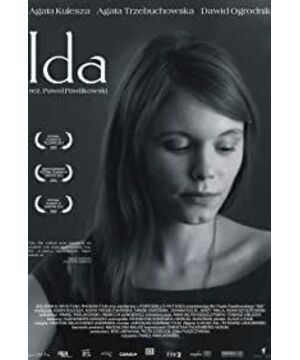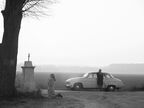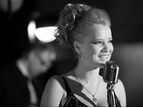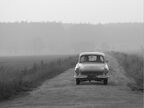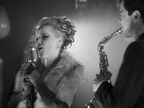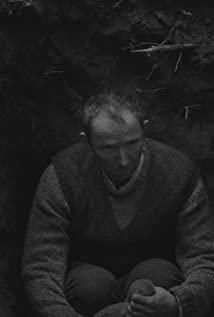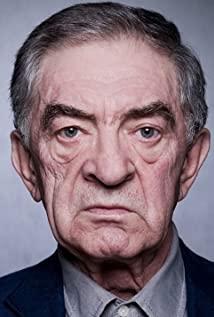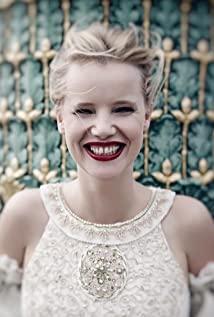After the demise of the Nazis, the nightmare of the Jews continues: anti-Semitism and anti-Semitism have occurred successively in the Soviet Union and Poland.
The Russian film "Kharustanlov, drive!" "(1998) describes the anti-Semitism wave in 1953, the tension of black and white light and shadow is breathtaking: cold branches, quiet sparrows, secret agents surging in the night and white snow, vicious statue of Stalin, sitting on a snowdrift to cool the hot chrysanthemum, violence Just like the automatic umbrella suddenly opened at the scene of a car accident or an affair; the tall and mighty, arrogant, general-level Jewish doctor was instantly reduced to a tortured and raped prisoner, and in a blink of an eye, he became a guest of the highest authority to diagnose and treat Stalin who was dying and struggling with a lingering illness. : The giant that shook half of the earth became a pile of disgusting rotten meat.
Every shot of the film is so rough and strong, which fully fits the weird and crazy times. The talented Alexei Germain has formed a double relationship with the Russian poetry film pioneered by Tarkovsky and Parajenov. The violent aesthetics of peak confrontation.
In France, where cultural relativism and value relativism prevail, the history of World War II is no longer taught in class because of the fear that the content of the massacre of Jews will incur resentment from Muslim students. There was a terrorist attack in Paris this year. The Polish film "Sister Ada" with the slaughter of Jews as the background invisibly added points. The film itself has first-rate plot, first-rate performance and first-rate photography, and won the Oscar for best foreign language film without any suspense.
An investigation by the Polish government in 2002 showed that during World War II, Poles carried out at least 30 massacres of Jews in 24 locations. Thousands of Jews died in violent ways. Not all atrocities were inspired by Nazi actions and propaganda; after the war, to prevent the Holocaust The survivors returned to their homes. At least 50 murders of Jews occurred in Poland in a short period of time, triggering two waves of Polish Jews emigrating overseas.
Before apprentice nun Ida took the oath to convert to Christ in 1962, she learned of her Jewish identity from Wanda, her only relative, and the two went on a journey to find relatives together. Wanda, who has a bohemian private life, was once a judge who frightened the enemies of the country. He was called "Red-haired Wanda." With the power of the police who had to whisper to her, he could directly threaten Poles who were suspected of killing his Jewish relatives and concealing the truth: " I can ruin you."
Poles are extremely entangled in their interpretation of history. On the one hand, they are the victims of the war. On the other hand, they also sound the death knell for the Jews. What the Jews need to reflect on is that the Jews themselves have contributed a lot to the red giant that crushed them. A large number of Soviet and Polish revolutionary elites such as Trotsky, the father of the Red Army and Kamenev, the veteran of the Communist Party of the Soviet Union, were all Jews.
Similar to "Kharustanlov, drive! "Sister Ada" is good because it did not simply place the Jews in the position of the victim: "Wanda the Red" itself is a metaphor. The relatives were killed by the Poles, and her gavel was full. The blood of the innocent.
The Poles revealed the location of the burial on the condition that they let the past be blamed. Holding the child's remains, the hard-hearted Wanda asked the executioner: "Is he very scared at the time?" This is a difficult question to answer. The murderous Wanda was familiar with begging for mercy, trembling limbs, and fearful eyes. It's just that she didn't expect that all of this would be punished on her. Bathing, drinking, pleasure-seeking, and music can't dispel the deep sense of crime and guilt. They can only fly out of the window like a bird to get permanent peace.
The composition of the film and the use of light have reached the level of textbooks. The ordinary images of Wanda and Ada in the hotel rooms are naturally and appropriately processed into a cross shape; Wanda sits alone in a bar with a tired old man across the street in the background. The pictures are rich in layers, and the characters are ready to go, full of the heavy texture of oil paintings.
What did Ada learn from the tragedy of the family and Wanda? When the handsome lover imagines the future and describes the happy scene of marriage and childbirth, Ida keeps asking peacefully: "So what?" The
steady scene suddenly begins to shake and agitate at the end of the film, following Ida's firm steps, symbolizing the young nun Has found the belief and direction of life. (Xinmin Weekly)
View more about Ida reviews


